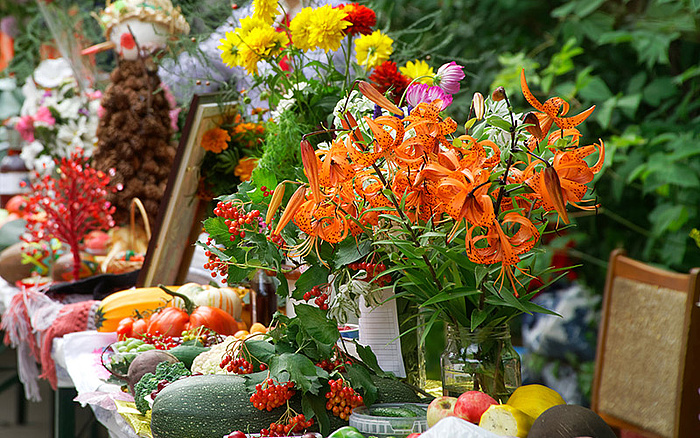
Registering trademarks for plants in Australia
"That which we call a rose by any other name would smell as sweet." Even so, the dynamic between plant varieties and trademarks in horticulture presents a thorny challenge, one that sets ownership against identification and intertwines science with commerce.
Central to this conundrum in Australia is the fact that plant breeders cannot register their plant variety names as word trademarks and so must find appropriate alternatives. This rule underscores a trademark's purpose – to distinguish the origins of goods and services in the market.
It follows that since the names given to cultivars, while markers of creativity, do not solely denote trade origin, they cannot be made exclusive. Instead, these labels become standard descriptors, integrated into both consumer vocabulary and industry terminology. Under Article 20 of the International Convention for the Protection of New Varieties of Plants, these generic names are referred to as "variety denominations."
The basic principle is that variety denominations form part of the scientific nomenclature and, as such, must be available for any producer or seller to describe the relevant plant. In other words, a generic name to identify a plant variety according to its genetic material and a name desired to be used as a trademark to signify the same plant's commercial origin cannot be one and the same.
Trademark eligibility criteria
Besides mere descriptiveness, hopeful applicants need to account for other factors that may rule a trademark out of registrability: Is it purely laudatory? Is it a geographical name or a surname? And is it a word or phrase that is likely to be required for legitimate use by others in the course of trade?

Though it may be produced by taking cuttings, a new plant variety is made from whole cloth as far as terminology goes. Variety dominations give breeders and gardeners a shared and infringement-free way to refer to the plants they are interested in.
Though such is the case for all trademark applications, cultivars are, in essence, highly technical products, and all prospective trademark registrations must undergo careful assessment in light of this. Additional considerations apply when examining an Australian trademark application in class 31, which covers plants or plant material such as fruits, flowers, seeds and cuttings used for propagation.
Assessing applications for plants in class 31
The examination process for plant-related trademarks under class 31 in Australia requires a deep understanding of botanical nomenclature. Hence, when an application lands on an examiner's desk, they turn to authoritative sources to ensure the submitted trademark does not infringe on established plant names. These include:
- The Australian Register of Plant Varieties – Checking against registered, pending or lapsed Plant Breeders' Rights (PBRs) is an essential step.
- The International Union for the Protection of New Varieties of Plants (UPOV) database – Referred to as PLUTO, this collates information on variety denominations from UPOV members and the Organisation for Economic Co-operation and Development (OECD).
Broader internet searches and reference checks are also conducted to determine if the proposed mark is excessively similar to a publicly accepted common name. Crucially, a positive result here is sufficient for an examiner to reject a trademark application – even if the name is not in the UPOV database or a registered PBR in Australia.
Legal hurdles under Australia's Trade Marks Act 1995 and how to overcome them
Following the examination stage, accepted trademarks enter a period during which third parties are invited to signal their opposition to the registration of the application regardless of whether they own any IP rights. Knowing the common grounds for these actions is vital for appealing or working around them.

Unless it is also subject to a patent, a new plant variety can be grown and sold by anyone. As a result, consumers need a way to recognize both the species of plant they are looking for and its trade origin. This is why the variety denomination and trademark must differ.
- Prescribed signs (Section 39): Marks that use reserved terms like "Plant Breeders' Rights" or the PBR abbreviation are disallowed unless these elements are excisable without altering the mark's identity.
- Not capable of distinguishing (Section 41): If a mark is inherently part of plant nomenclature, it may lack distinctiveness. Applicants can counter this by narrowing their goods' specifications to exclude goods of the affected genus or genera. Alternatively, it is possible to provide evidence demonstrating that the mark is, or is expected to become, distinctive through use.
- Contrary to law (Section 42): Marks that could infringe existing PBRs are at risk. Excluding problematic goods or obtaining consent from the holder of a PBR are potential solutions. However, if the mark has also been refused under Sections 41 or 43, a letter of consent will not be sufficient.
- Deception and confusion (Section 43): Related to Section 41's stipulation, marks that might mislead consumers by suggesting a specific plant variety cannot be registered. Limiting the application to exclude such genera can mitigate this issue.
- Comparison of trademarks (Section 44): This involves assessing similarity to prior marks. In the event of an objection, strategies include filing evidence of prior continuous use or honest concurrent use, obtaining a letter of consent from the owner of the prior mark or amending the specification of goods.
Key takeaways for growers
Plant breeders are especially adept at trimming away whatever does not promote a healthy result. This exercise comes second nature to them, so a sharp pair of legal pruning shears in the hands of an experienced trademark specialist is welcome assistance. Backed by someone with an understanding of Australia's trademark examination rules, horticulturalists can select the most promising mark with which to bring the fruits of their efforts to market.
Filed in

Learn why brand name and trademark law matter for your business, from marketing efforts to bottom lines.



